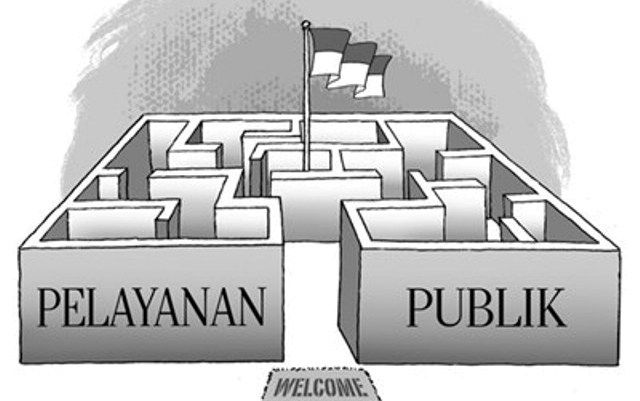Simplification of Bureaucracy for a Prosperous Indonesia
By: Indra Fahrozi )*
Problems related to bureaucracy lately have become very interesting because they are considered to hamper investment. The government also took the initiative to cut bureaucracy in order to accelerate decision making in order to create a better Indonesia.
President Joko Widodo (Jokowi) has a plan to cut the flow of the government bureaucracy by simplifying the level of echelon of state officials in order to increase the confidence of business people and investors. With many echelon-level positions suspected to add to the long list of complicated bureaucracy in the country. Not only inflated the state budget, but also related to slow performance in serving the people.
In developed countries like Japan, there are only echelon I and II who act as actors in government and the Minister only functions as a political symbol. Besides being considered effective and efficient, the sakura country is in fact able to survive with its bureaucratic condition which seems economical.
Jokowi revealed that investment in job creation must remain a priority, so long and slow procedures must be summarized. In addition, he also requested that echelonization also be simplified to only 2 levels. Which will be replaced by functional positions that value expertise and value competence.
At present, Minister of State Apparatus and Bureaucratic Reform (MenPAN-RB), Tjahjo Kumolo has improved the echelon structure in all ministries in accordance with the direction of President Joko Widodo (Jokowi). The PANRB Ministry was the first agency to complete the bureaucratic simplification by transferring 141 administrator and supervisor officials to functional positions.
In this case, the agency has installed 52 echelon III and 89 echelon IV officials into several functional positions. The process of transferring structural positions to functional within the Ministry of PANRB has been completed for one month. Starting from the mapping of positions to the establishment of regulations on organization and work procedures.
This simplification of bureaucracy aims to create a dynamic, agile (bureaucratic) and professional bureaucracy in an effort to increase effectiveness and efficiency to support government performance to the public. In fact, President Joko Widodo firmly asked ministers, officials and bureaucrats to be more serious in ensuring the achievement of development program objectives. If it is found that something is not serious, the President will immediately dismiss the person concerned from his position without needing a long time.
Tjahjo Kumolo also said that in the roadmap for simplifying the bureaucracy, it would be divided into 3 (three) stages, namely short, medium and long term.
For the short term include: The issuance of a PANRB Minister Circular, identification and study of Government agencies, regarding the mapping of positions, as well as policy formulation.
As for the medium term, according to the Minister of PANRB, it includes aligning functional position (JF) policies for JF performance assessment, adjusting JF policies and LAN leadership training curricula, as well as related to the implementation of the appointment or transfer of administrative positions to functional in Government institutions.
While the long-term stage will be implemented with the application of the Smart Office Bureaucracy through the Electronic-Based Government System or SPBE (e-Government) nationally as well as supervision and evaluation of its implementation.
It was also mentioned that there are nine steps that must be done immediately. The nine strategic steps will begin with the process of identifying echelon III, IV, and V work units that can be summarized and transferred to structural positions according to the position map in each agency.
Then, a position mapping will be carried out in the work units affected by the transition, as well as identifying the equality of the structural positions with the functional positions to be held. Furthermore, the alignment of budget needs related to the amount of income in the office affected by this bureaucratic simplification policy. Agency leaders must carry out socialization efforts and provide understanding to all employees in their respective institutions relating to the simplification of bureaucratic policies to create good synergy.
It is no longer a secret that so far many levels of ranks have made regional expenditures wasteful, especially for employees. Whereas the allocation for office allowances can be used for more urgent and important needs, for example such as fulfilling basic infrastructure that is more needed by the community.
In connection with the many positive benefits of simplifying the bureaucracy, it is fitting for the plan to get broad support. Not only makes performance more effective and efficient. Including being able to save the state budget related to salary which is considered overflowing everywhere. Moreover, the increase in human resources is aimed at building Indonesia’s competitiveness so that it is weighted in the eyes of the world. Most important, is the acceleration of national economic improvement for the welfare of all Indonesian citizens.
)* The author is a social political observer
